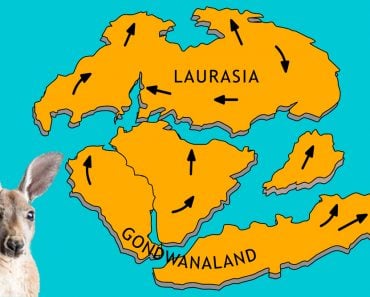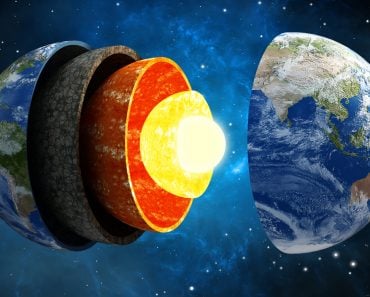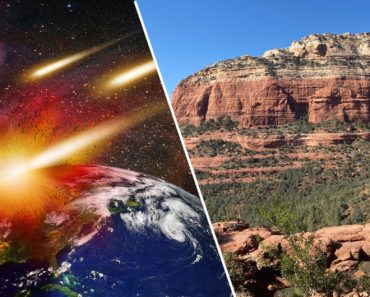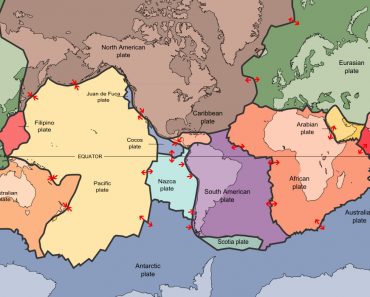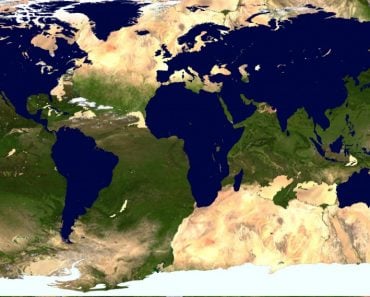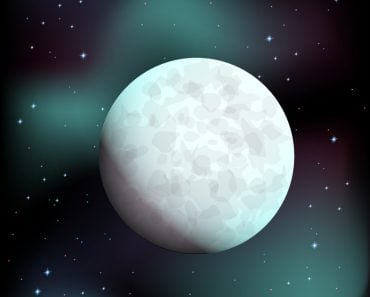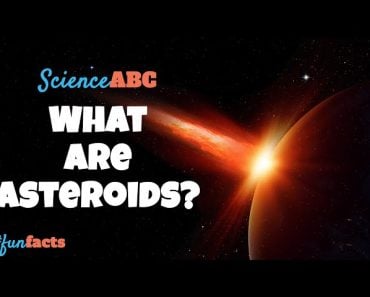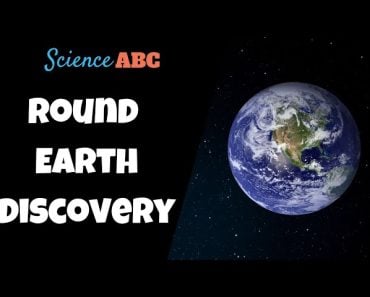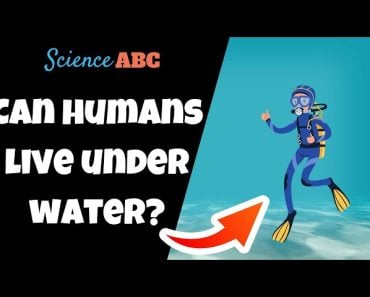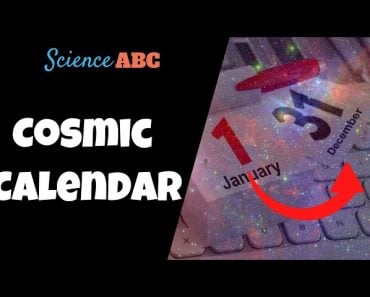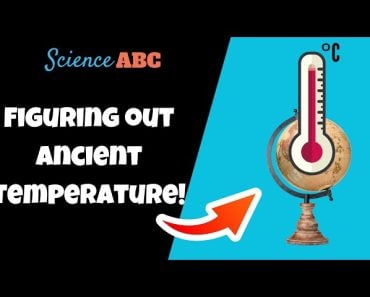Table of Contents (click to expand)
The Earth has changed a lot over time. It was first formed about 4.5 billion years ago and it was a very different place than it is now. There were no continents or oceans, it was just a ball of rocks. The Earth’s continents and oceans formed over time and it’s still changing today. There was a time when the Earth was completely underwater, but that was a long time ago and the Earth is a lot different now.
When you think about the Earth today, one of the most basic facts we know is that there are seven continents separated by various oceans. However, this wasn’t always the case. Earth’s history is a long and violent story, beginning with its gradual formation, followed by the fiery formative years and ending with the relative stability we see today.
Earth was formed approximately 4.5 billion years ago, and while the first billion years was a chaotic time, things eventually began to settle down and certain systems began to form. Feedback loops and geologic behaviors within the Earth’s crust have had a remarkably dynamic effect on the face of this planet for billions of years, before the continents even existed. Yes, there have been times in Earth’s history when it has been completely covered by H2O—both liquid and solid forms!
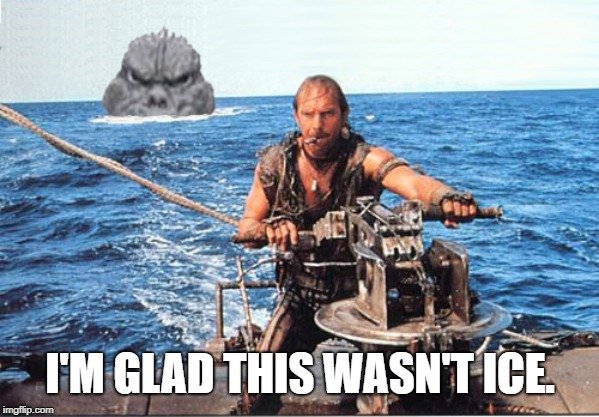 However, before we can fully understand that “Waterworld” era of our planet, we should look at the earlier history of Earth, as well as the underlying mechanisms that have driven the formation of the world we know today!
However, before we can fully understand that “Waterworld” era of our planet, we should look at the earlier history of Earth, as well as the underlying mechanisms that have driven the formation of the world we know today!
Recommended Video for you:
Early Earth History
As mentioned, the formative event of the planet took place 4.5 billion years ago, when rocky elements left over after the formation of our Sun coalesced through the force of gravity to form a planetary core and gradually accrete enough materials to form a planet. More dense materials sank to the middle, while lighter elements rose to form the planetary crust. Beneath the crust is the mantle, which is made of solid rock at high temperatures and under a significant amount of pressure. The crust moves over the mantle due to plate tectonics over massive geologic timespans of millions of years. The crust is not surfing on a molten ocean, but rather gradually shifting and cycling as a result of convection from within the mantle, according to certain studies. It is the movement of these plates, and the subsequent collisions, that lead to the formation of mountains and volcanoes.
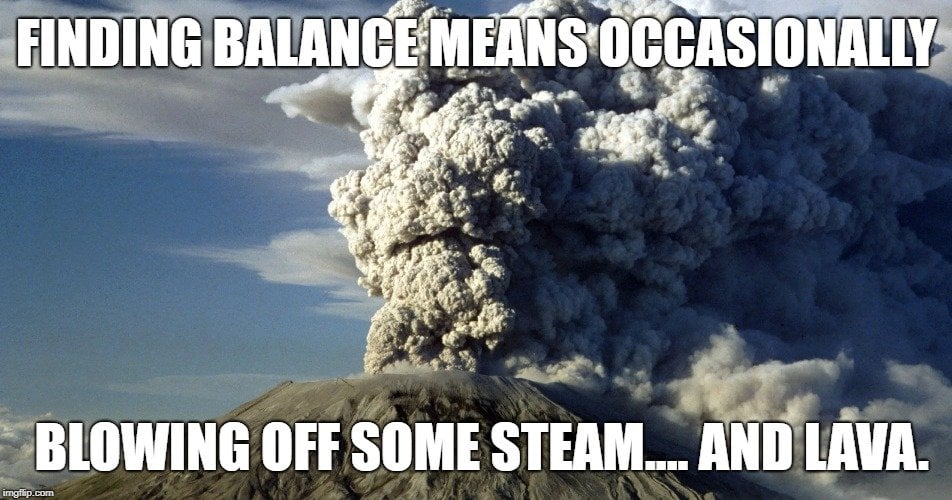 Now remember, this was a very violent time in the solar system; asteroid and comet strikes were much more common, simply because there was a lot more loose material swirling in the space between the nascent plants. The Earth was struck tens of thousands of times by icy comets and rocky meteors during the Late Heavy Bombardment (4.1-3.8 billion years ago), strikes that deposited massive amounts of water on the planet, leading to the formation of the oceans.
Now remember, this was a very violent time in the solar system; asteroid and comet strikes were much more common, simply because there was a lot more loose material swirling in the space between the nascent plants. The Earth was struck tens of thousands of times by icy comets and rocky meteors during the Late Heavy Bombardment (4.1-3.8 billion years ago), strikes that deposited massive amounts of water on the planet, leading to the formation of the oceans.
Earth’s Dynamic Crust
As that summary suggests, the Earth formed in stages, but once the lithosphere (outer crust of the Earth) formed, the real movement and change could begin. The Earth’s composition and various layers are dependent on the density of the materials present. Denser materials sink, while lighter materials rise/float. The outer shell of the Earth is the lithosphere, which is primarily divided into continental crust, oceanic crust and the solid upper part of the mantle. For this article, the continental crust and the oceanic crust are of particular interest, but there is an important difference between the two.
As mentioned, the crust can move over the mantle of the planet due to convection activity, and the large tectonic plates present on the crust meet at ridge lines and fault lines. The different plates are constantly moving, colliding to form mountain ranges, subducting to form marine trenches, pulling apart, or scraping past one another. The points or boundary lines where the different plates meet are the site of incredible transformation, even if it does take millions of years. The three different boundaries are transform boundaries, convergent boundaries and divergent boundaries.
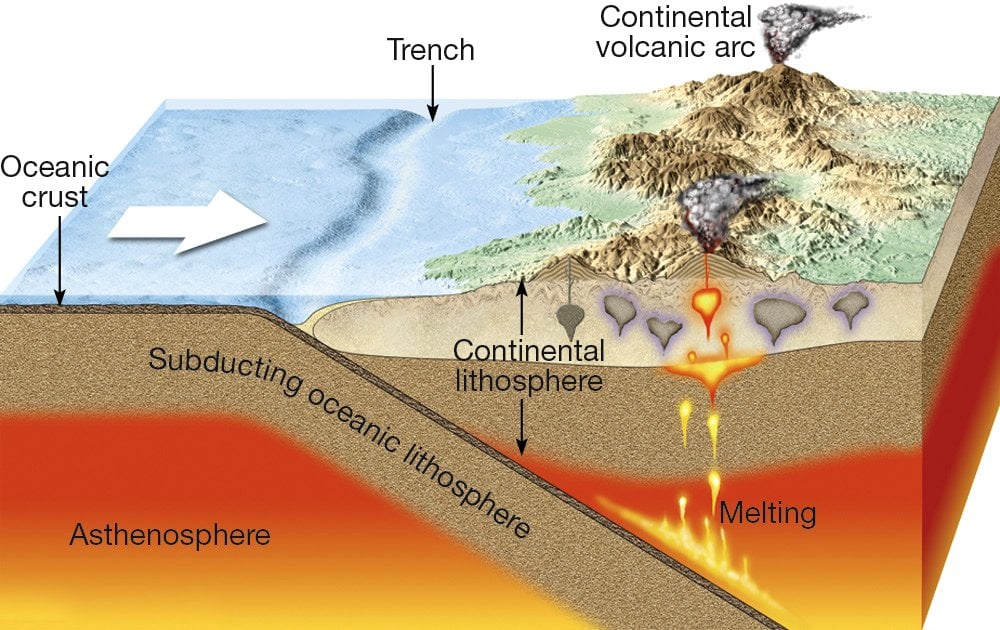
Transform boundaries are where two plates are in contact, trying to move against one another. This creates a huge amount of pressure due to friction, which is released in the form of earthquakes. Convergent boundaries are where two plates collide “head-on”, resulting in the ground crumpling upwards or being subducted beneath one another, causing mountains or islands to form. Finally, there are divergent boundaries, where the tectonic plates are pulling away from one another. At this point, the superheated rock in the mantle is released and can form new crust.
This final boundary is critical in our understanding of the oceanic crust and the continental crust. Oceanic crust is formed initially, through a process called partial melting. In a sense, the material of the mantle is a mixed composition, and as we know, different materials have different melting points. In the case of oceanic crust formation, the lighter elements of the mantle, such as basalt rocks, will be spewed out (gradually) to become new oceanic crust. Some dense parts of the rock melt and sink lower, while the lighter elements form the oceanic crust material. Over geologic time, however, the oceanic crust also experiences partial melting, and the continental crust rises—being less dense than oceanic crust, and composed primarily of granitic materials.
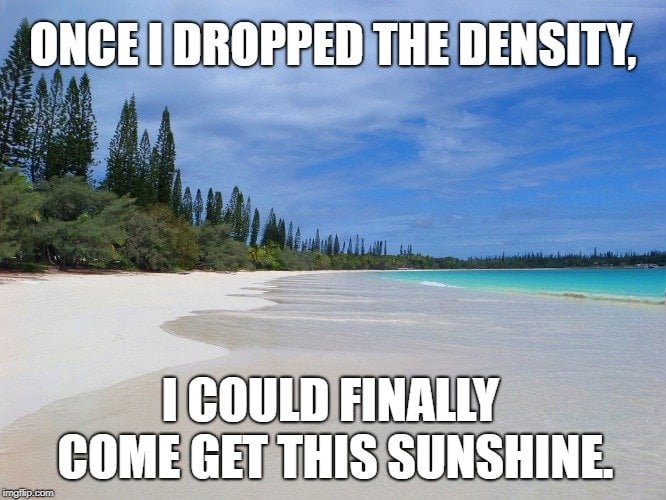 While the oceanic crust is typically about 5km thick, the continental crust is often an average of 25-30km thick; underneath the largest mountain ranges on earth, such as the Himalayas, the continental crust may be as thick as 100km. The major different between continental crust and oceanic crust is its average thickness and material composition. These two crusts have been moving and interacting for billions of years, and the convergence and separation of the continents has been going on for nearly as long, in a massive repeating pattern called the “supercontinent cycle”, which is believed to take 300-500 million years for a complete rotation.
While the oceanic crust is typically about 5km thick, the continental crust is often an average of 25-30km thick; underneath the largest mountain ranges on earth, such as the Himalayas, the continental crust may be as thick as 100km. The major different between continental crust and oceanic crust is its average thickness and material composition. These two crusts have been moving and interacting for billions of years, and the convergence and separation of the continents has been going on for nearly as long, in a massive repeating pattern called the “supercontinent cycle”, which is believed to take 300-500 million years for a complete rotation.
Also Read: How Was The Earth Formed?
So… Was Earth Ever Completely Underwater?
In answer to the initial question posed in this article, yes, there was almost certainly a period of time when the vast majority of Earth was covered in water. Early estimates of this waterworld period of Earth’s history was about 2.5 billion years ago, but recent research has pushed back that estimate by another 500 million years. It is now widely believed that from the period of about 4 billion-3 billion years ago, the Earth was largely underwater. This would have occurred at varying depths, based on the frequency and intensity of bombardments by massive icy objects.
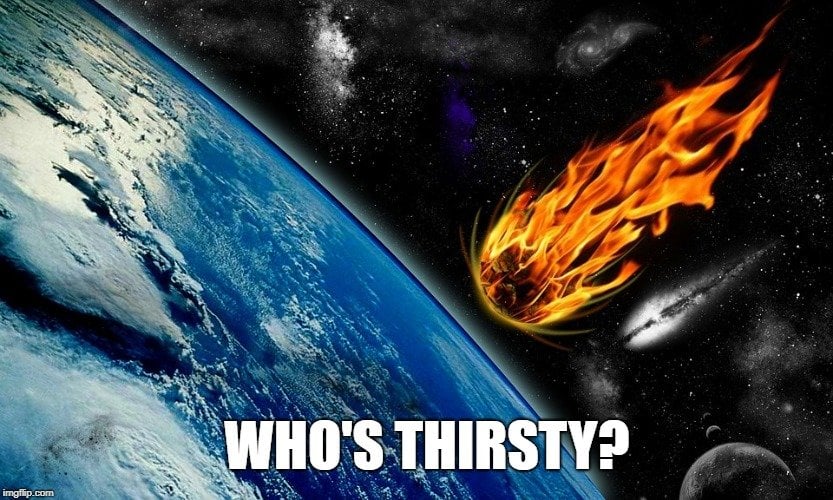 Zircon mineral grains found in rocks dating back to the first 200 million years of Earth’s history have shed more light on early Earth’s composition and behavioral patterns. The zircon was created as a result of igneous rock melting, rather than sediment melting, suggesting that continental collisions had not begun at that point. While this is relatively new research, it is a compelling argument for the full-Earth ocean theory. Bacterial life is believed to have developed around 3.8 billion years ago, but it would have taken another 800 million years for the movement of the Earth’s crust to generate larger continental land masses. While there may have been small islands scattered around the planet, even as far back as 4 billion years, the seven huge landmasses we know today weren’t around for a very long time on Earth.
Zircon mineral grains found in rocks dating back to the first 200 million years of Earth’s history have shed more light on early Earth’s composition and behavioral patterns. The zircon was created as a result of igneous rock melting, rather than sediment melting, suggesting that continental collisions had not begun at that point. While this is relatively new research, it is a compelling argument for the full-Earth ocean theory. Bacterial life is believed to have developed around 3.8 billion years ago, but it would have taken another 800 million years for the movement of the Earth’s crust to generate larger continental land masses. While there may have been small islands scattered around the planet, even as far back as 4 billion years, the seven huge landmasses we know today weren’t around for a very long time on Earth.
Interestingly enough, there are actually more than seven continents on this planet, but some of the more recently discovered ones are completely submerged. For example, there is a huge landmass off the southeast coast of Australia called Zealandia, which was once attached to the continent of Australia about 80 million years ago. There is also the Kerguelen Plateau, about 2,000 miles south of Australia, and extends for about 1,400 miles, but only a small amount of the plateau breaks the surface of the ocean.
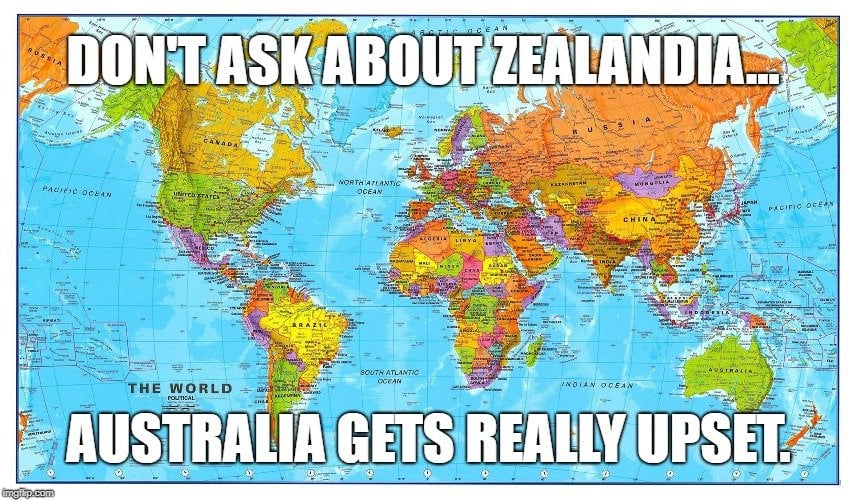 Additionally, the entire planet has also been covered in solid water before, even if the continents had risen above the sea. There have been two times in Earth’s history—according to the geologic evidence that has been compiled—that ice extended across the entire globe, from the equators to the poles. While this isn’t the waterworld scenario most people imagine, it has happened before and will likely happen again—but probably not for hundreds of millions of years!
Additionally, the entire planet has also been covered in solid water before, even if the continents had risen above the sea. There have been two times in Earth’s history—according to the geologic evidence that has been compiled—that ice extended across the entire globe, from the equators to the poles. While this isn’t the waterworld scenario most people imagine, it has happened before and will likely happen again—but probably not for hundreds of millions of years!
Also Read: Is There Really An Entire Ocean Hidden Somewhere On Earth?
A Final Word
Understanding the history of Earth can also help us have some idea of what the future may hold. Climate change and greenhouse emissions have always been a part of this planet, but mankind’s acceleration of this process is unprecedented in Earth’s history. With rising sea levels and temperatures, mass extinctions, overpopulation, poor ecosystem management and increasingly severe weather events around the globe, humanity needs to remember that this planet will find ways to balance itself and find stability, even if it has to hit the restart button!
References (click to expand)
- Early Earth was covered in a global ocean and had no .... New Scientist
- Stanford study: Earth's early ocean cooled more than a billion years earlier than thought - news.stanford.edu
- Supercontinent cycle - Wikipedia. Wikipedia
- Indiana University Bloomington - www.indiana.edu:80
- How did Earth form? - Space.com. Space.com
- Inside the Earth - USGS Publications Repository. The United States Geological Survey
- Why does the earth have layers? What is the difference between oceanic crust and continental crust? Which is heavier? - UCSB Science Line. The University of California, Santa Barbara

